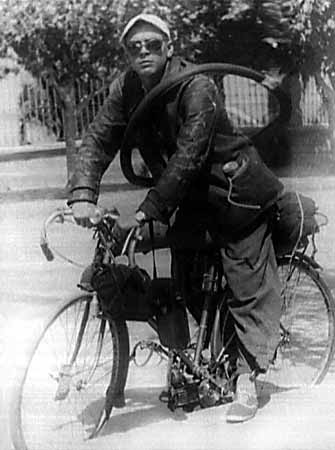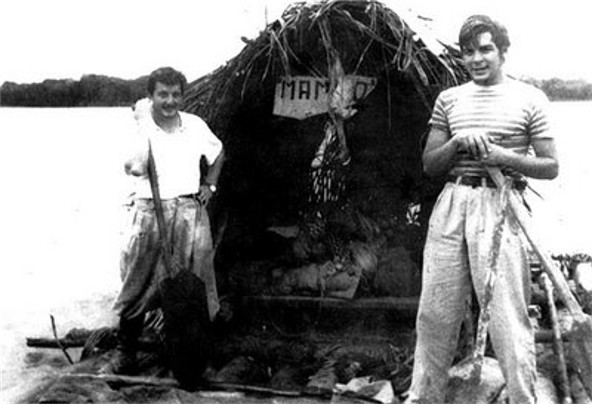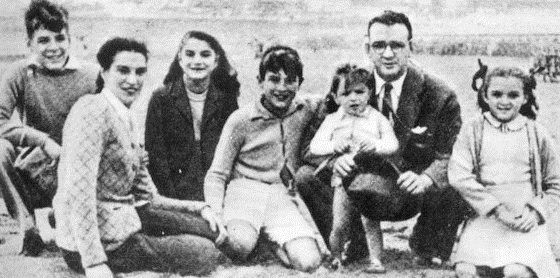|
San Pablo, Peru
San Pablo de Loreto is a village, and the location of a leper colony in Peru. The village is located near Iquitos. The colony was constructed in 1925. In 1941, it became an agricultural colony in which the patients had to work the fields. In 1952, Che Guevara and Alberto Granado worked at the colony. The colony was home to around 600 people at the time. By 1957, the number of patients had increased to about 780. The colony was closed for admission from 1967 onwards, and a 1968 report by Dr Masayoshi Itoh described that 87% of the patients were in need of surgical treatment. The leprosium has since then closed, and the patients have been transferred to Iquitos. See also * The Motorcycle Diaries (book) or The Motorcycle Diaries (film) ''The Motorcycle Diaries'' ( es, Diarios de motocicleta) is a 2004 biopic about the journey and written memoir of the 23-year-old Ernesto Guevara, who would several years later become internationally known as the Marxist guerrilla leader and ... ... [...More Info...] [...Related Items...] OR: [Wikipedia] [Google] [Baidu] |
Flag Of Peru
The flag of Peru was adopted by the government of Peru in 1824, and modified in 1950. According to the article 49 of the Constitution of Peru, it is a vertical triband (flag), triband with red outer bands and a single white middle band. Depending on its use, it may be Defacement (flag), defaced with different emblems, and has different names. Flag day in Peru is celebrated on 7 June, the anniversary of the Battle of Arica. Design and symbolism Coat of arms Meaning of the colors Red represents the blood that was spilled for the fight. White represents Purity and Peace. Colour approximations The current colors of the Peruvian flag were taken of the design of José de San Martín, San Martín and José Bernardo de Tagle y Portocarrero, Marquis of Torre Tagle, Torre Tagle. The reasons why red and white were chosen are unknown. Official tones determined by Peruvian laws do not exist. However, there are some particular initiatives in approximated equivalents in multiple color mod ... [...More Info...] [...Related Items...] OR: [Wikipedia] [Google] [Baidu] |
Iquitos
Iquitos (; ) is the capital city of Peru's Maynas Province and Loreto Region. It is the largest metropolis in the Peruvian Amazon, east of the Andes, as well as the ninth-most populous city of Peru. Iquitos is the largest city in the world that cannot be reached by road that isn't on an island, it is accessible only by river and air. It is known as the "capital of the Peruvian Amazon". The city is located in the Great Plains of the Amazon Basin, fed by the Amazon, Nanay, and Itaya rivers. Overall, it constitutes the Iquitos metropolitan area, a conurbation of 471,993 inhabitants consisting of four districts: Iquitos, Punchana, Belén, and San Juan Bautista. The area has long been inhabited by indigenous peoples. According to Spanish historical documents, Iquitos was established around 1757 as a Spanish Jesuit reduction on the banks of the Nanay River. The Jesuits gathered local Napeano (Yameo) and Iquito natives to live here, and they named it ''San Pablo de Napeanos'' ... [...More Info...] [...Related Items...] OR: [Wikipedia] [Google] [Baidu] |
Leper Colonies
A leper colony, also known by many other names, is an isolated community for the quarantining and treatment of lepers, people suffering from leprosy. '' M. leprae'', the bacterium responsible for leprosy, is believed to have spread from East Africa through the Middle East, Europe, and Asia by the 5th century before reaching the rest of the world more recently. Historically, leprosy was believed to be extremely contagious and divinely ordained, leading to enormous stigma against its sufferers. Other severe skin diseases were frequently conflated with leprosy and all such sufferers were kept away from the general public, although some religious orders provided medical care and treatment. Recent research has shown ''M. leprae'' has maintained a similarly virulent genome over at least the last thousand years, leaving it unclear which precise factors led to leprosy's near elimination in Europe by 1700. A growing number of cases following the first wave of European colonization, how ... [...More Info...] [...Related Items...] OR: [Wikipedia] [Google] [Baidu] |
The Motorcycle Diaries (film)
''The Motorcycle Diaries'' ( es, Diarios de motocicleta) is a 2004 biopic about the journey and written memoir of the 23-year-old Ernesto Guevara, who would several years later become internationally known as the Marxist guerrilla leader and revolutionary leader Che Guevara. The film recounts the 1952 expedition, initially by motorcycle, across South America by Guevara and his friend Alberto Granado. As well as being a road movie, the film is a coming-of-age film; as the adventure, initially centered on youthful hedonism, unfolds, Guevara discovers himself transformed by his observations on the life of the impoverished indigenous peasantry. Through the characters they encounter on their continental trek, Guevara and Granado witness first hand the injustices that the destitute face and are exposed to people and social classes they would have never encountered otherwise. To their surprise, the road presents to them both a genuine and captivating picture of Latin American ident ... [...More Info...] [...Related Items...] OR: [Wikipedia] [Google] [Baidu] |
The Motorcycle Diaries (book)
''The Motorcycle Diaries'' ( es, Diarios de motocicleta, links=no) is a posthumously published memoir of the Marxist revolutionary Ernesto "Che" Guevara. It traces his early travels, as a 23-year-old medical student, with his friend Alberto Granado, a 29-year-old biochemist. Leaving Buenos Aires, Argentina, in January 1952 on the back of a sputtering single cylinder 1939 Norton 500cc dubbed ''La Poderosa'' ("The Mighty One"), they desired to explore the South America they only knew from books.On the Trail of the Young Che Guevara by Rachel Dodes, ''The New York Times'', December 19, 2004 During the formative odyssey Guevara is transformed by witnessing the social injustices of exploited mine workers, persecuted |
Surgery
Surgery ''cheirourgikē'' (composed of χείρ, "hand", and ἔργον, "work"), via la, chirurgiae, meaning "hand work". is a medical specialty that uses operative manual and instrumental techniques on a person to investigate or treat a pathological condition such as a disease or injury, to help improve bodily function, appearance, or to repair unwanted ruptured areas. The act of performing surgery may be called a surgical procedure, operation, or simply "surgery". In this context, the verb "operate" means to perform surgery. The adjective surgical means pertaining to surgery; e.g. surgical instruments or surgical nurse. The person or subject on which the surgery is performed can be a person or an animal. A surgeon is a person who practices surgery and a surgeon's assistant is a person who practices surgical assistance. A surgical team is made up of the surgeon, the surgeon's assistant, an anaesthetist, a circulating nurse and a surgical technologist. Surgery usually spa ... [...More Info...] [...Related Items...] OR: [Wikipedia] [Google] [Baidu] |
Alberto Granado
Alberto Granado Jiménez (August 8, 1922March 5, 2011) was an Argentine–Cuban biochemist, doctor, writer, and scientist. He was also the youthful friend and traveling companion of Che Guevara during their 1952 motorcycle tour in Latin America. Granado later founded the University of Santiago de Cuba School of Medicine. He authored the memoir ''Traveling with Che Guevara: The Making of a Revolutionary'', which served as a reference for the 2004 film '' The Motorcycle Diaries'', in which he was played by Rodrigo de la Serna. An elderly Alberto Granado makes a short appearance at the end of the film. Early years Granado was born on August 8, 1922, in Hernando, Córdoba to Dionisio T. Granado (a Spanish clerical employee of an Argentine railway company) and Adelina Jiménez Romero. [...More Info...] [...Related Items...] OR: [Wikipedia] [Google] [Baidu] |
Che Guevara
Ernesto Che Guevara (; 14 June 1928The date of birth recorded on /upload.wikimedia.org/wikipedia/commons/7/78/Ernesto_Guevara_Acta_de_Nacimiento.jpg his birth certificatewas 14 June 1928, although one tertiary source, (Julia Constenla, quoted by Jon Lee Anderson), asserts that he was actually born on 14 May of that year. Constenla alleges that she was told by Che's mother, Celia de la Serna, that she was already pregnant when she and Ernesto Guevara Lynch were married and that the date on the birth certificate of their son was forged to make it appear that he was born a month later than the actual date to avoid scandal. ( Anderson 1997, pp. 3, 769.) – 9 October 1967) was an Argentine Marxist revolutionary. A major figure of the Cuban Revolution, his stylized visage has become a ubiquitous countercultural symbol of rebellion and global insignia in popular culture. As a young medical student, Guevara traveled throughout South America and was radicalized by the poverty, hunger, ... [...More Info...] [...Related Items...] OR: [Wikipedia] [Google] [Baidu] |
Leper Colony
A leper colony, also known by many other names, is an isolated community for the quarantining and treatment of lepers, people suffering from leprosy. '' M. leprae'', the bacterium responsible for leprosy, is believed to have spread from East Africa through the Middle East, Europe, and Asia by the 5th century before reaching the rest of the world more recently. Historically, leprosy was believed to be extremely contagious and divinely ordained, leading to enormous stigma against its sufferers. Other severe skin diseases were frequently conflated with leprosy and all such sufferers were kept away from the general public, although some religious orders provided medical care and treatment. Recent research has shown ''M. leprae'' has maintained a similarly virulent genome over at least the last thousand years, leaving it unclear which precise factors led to leprosy's near elimination in Europe by 1700. A growing number of cases following the first wave of European colonization, how ... [...More Info...] [...Related Items...] OR: [Wikipedia] [Google] [Baidu] |
Peru
, image_flag = Flag of Peru.svg , image_coat = Escudo nacional del Perú.svg , other_symbol = Great Seal of the State , other_symbol_type = Seal (emblem), National seal , national_motto = "Firm and Happy for the Union" , national_anthem = "National Anthem of Peru" , march = "March of Flags" , image_map = PER orthographic.svg , map_caption = , image_map2 = , capital = Lima , coordinates = , largest_city = capital , official_languages = Peruvian Spanish, Spanish , languages_type = Co-official languages , languages = , ethnic_groups = , ethnic_groups_year = 2017 , demonym = Peruvians, Peruvian , government_type = Unitary state, Unitary Semi-presidential system, semi-presidential republic , leader_title1 = President of Peru, President ... [...More Info...] [...Related Items...] OR: [Wikipedia] [Google] [Baidu] |
San Pablo District, Mariscal Ramón Castilla
San Pablo District is one of four districts of the province Mariscal Ramón Castilla in Peru. Instituto Nacional de Estadística e Informática The Instituto Nacional de Estadística e Informática (INEI) ("National Institute of Statistics and Informatics") is a semi-autonomous Peruvian government agency which coordinates, compiles, and evaluates statistical information for the country .... Banco de Información Distrital''. Retrieved April 11, 2008. References Districts of the Mariscal Ramón Castilla Province Districts of the Loreto Region {{Loreto-geo-stub ... [...More Info...] [...Related Items...] OR: [Wikipedia] [Google] [Baidu] |
Districts Of Peru
The districts of Peru () are the third-level country subdivisions of Peru. They are subdivisions of the provinces of Peru, provinces, which in turn are subdivisions of the larger regions of Peru, regions or departments. There are 1,838 districts in total. Overview A 1982 law requires a minimum of residents in an area for a new district to be legally established: 3,500 if it is located in the rainforest, 4,000 in the Andes highlands and 10,000 in the Chala, coastal area. In the dry Andean area, many districts have less than 3,500 inhabitants due to low population density in the area. In some cases, their populations have decreased in comparison to the days when they were founded. Districts that are located at very high altitudes tend to be scarcely populated. These districts usually are large in area, have few available land for use. Many basic government services do not reach all residents of these districts due to their difficult geography. Many lack financial means to govern th ... [...More Info...] [...Related Items...] OR: [Wikipedia] [Google] [Baidu] |
_(2).jpg)



.jpg)


